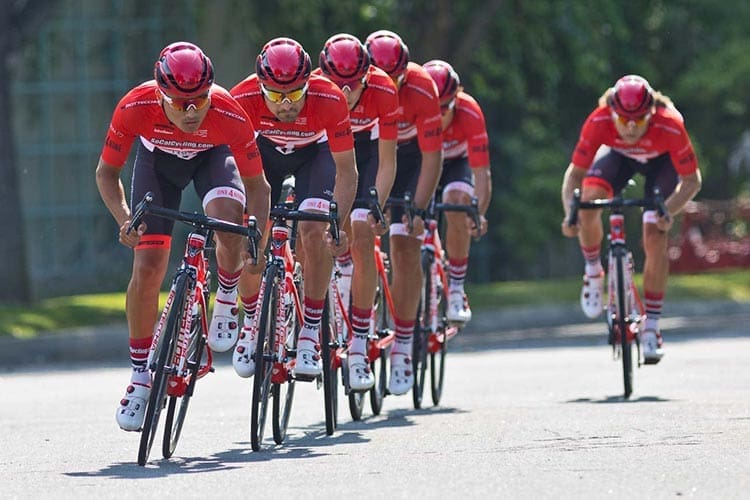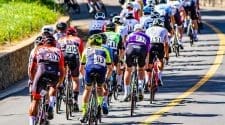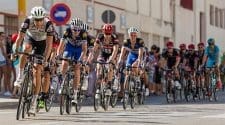Off-Season Training Prepares Cyclists for Upcoming Season
The offseason is where the successful athlete is made. Not too many athletes have claimed to have “too much time to prepare.” On the contrary, the successful athlete is utilizing the offseason initially as a time to recover but is planning and preparing for the upcoming season.
After a long and grueling road season, many athletes turn to another discipline in cycling such as cyclo-cross or mountain biking. Depending on location, road racing could start in less than a month after these seasons end. Each type of climate presents its own set of challenges with the racing calendar as this will often dictate when the offseason is. The offseason is most typically defined as the period of time immediately after the racing season. For many people, this may be only a month or two in length, whereas others may have only a few months of racing paired with an extensive break from racing. In any scenario, the offseason often means at least a short amount of time away from the bike or cycling-specific workouts, or at least it should. Many take the term “offseason” quite literally as the bike sits dormant, neglected in the corner. In reality, this period should be anything but “off”.
Considerations for the Off-Season
The offseason is a great place to start anew, and literally rebuild the athlete’s physiological profile. Recovery is needed for this and should mean a reduction of total body stress. The physical demands of racing and training can be high and though athletes may want to “maintain” their current fitness at or near their peak, there is little to no efficacy for attempting to do so. Immediately after the offseason, there is no real benefit to maintaining a high-intensity training load or volume. Just as each training month should have a week of unloading (a decrease in the stimulus), the training year should also unload at the same scale. For example, If an athlete spent 5 months training leading up to racing, raced for another 4 months, the 3 months following racing should be used first to recover (or unload) and then address the athlete’s needs heading into the next season. It may be possible to have a great amount of foresight as to what these needs are, but while in the season it may not be wise to look too closely to the offseason.
Although it may be much easier to quantify the stress of training, mental stress should also be considered. Training and racing also require a great amount of mental acuity as coaches and athletes should evaluate how the offseason can start off on the right foot and be a rejuvenation of the athlete holistically. The first few weeks of the offseason are a great time to let everything go, but soon thereafter the coach and athlete have a major opportunity to lay the foundation for a successful season. The offseason is a great time to work on some the limiters that may not be as feasible to work on during the few months leading up to a big event.
Rebuilding
The offseason presents an excellent opportunity to truly recover. Many athletes complain of nagging injuries or discrepancies in mobility hinder the functionality of their movements not only in everyday life but as it translates to cycling. With many injuries, there is no quick fix other than to let the tissue heal and slowly and progressively begin to add resistance or load to whatever the injured or troubled area is. We’ve all had a tough workout that left us sore for days. If we looked at a muscle biopsy, we could literally see hundreds of micro-tears in the muscle tissue. At the muscle-tendon, tears take much longer to heal and in short require adequate recovery and sometimes rehabilitation in order to be able to be strengthened once again. Inflammation of the muscle-tendon (Tendonitis) is another common ailment that requires a sequence of reduced activity. One major concern might be OTS or overtraining syndrome. OTS is defined as “As the accumulation of training and/or non-training stress resulting in a long term decrement in performance capacity, either with or without related physiological signs and symptoms. Restoration of performance capacity may take several weeks to several months (Kreider, Fry, & O’Toole, 1998). Addressing these concerns in the offseason is crucial as taking extensive time off leading up to a priority event will likely yield less than optimal performance and results.
Successful athletes not only take sufficient time to recover but utilize time away from racing to its full potential. Given an adequate break from the stress of training and racing, there are many things an athlete can do to keep their motivation high while not being completely sedentary. Further, it should be advantageous for an athlete to spend time addressing areas of need or perhaps weaknesses and limiters that were not feasible to do so in season.
A common practice for cycling athletes is the application of cross-training. This may include other forms of cycling, but ultimately could be any other form of exercise that the athlete enjoys. Strength and resistance training can be a great way to improve areas of the body that may have been neglected over the course of the season, but may also serve to contribute to an athlete’s specific strengths while addressing weaknesses. Circuit training and similar forms of resistance training offer an excellent way to build strength while maintaining an aerobic component. Other areas of need may be flexibility which may be significantly improved through static and dynamic stretching and/or yoga or similar practices. As the cycling training progresses there may be a need to reduce the time spent doing other types of workouts as they may interfere with the efficacy of a cycling-specific workout. For this reason, the first 8-12 weeks after the season make for a great time to start strengthening other areas.
It is important to incorporate skills that actually help a rider in a race. If a coach is specific enough to include water bottle grabs, bump drills and tire rubbing into training, you’ll have an athlete that will be able to feed efficiently, have better bike handling, and perhaps a more confident athlete in tight racing situations. Teaching a skill is one thing, but the key is practice and repetition of the correct method. Training rides with an athlete are a great way to find out areas that might need improvement as ride data or phone conversations don’t always spell out subtle discrepancies in technique, or things that could be improved upon. Furthermore, team training rides may offer the athlete a great opportunity to learn or acquire more race-specific tactics and strategies. Heading into the season, it should be important for an athlete to have clear goals of what they hope to accomplish. Three types of goals can be identified (Leith, 2003). These goals may be outcome goals (such as winning a specific race), performance goals (i.e. completing a 40K time trial in under an hour), or process goals, that deal with how an athlete approaches their race, their warm-up strategy, or any task or method that will aid in accomplishing other set goals. An athlete should have a mix of all types of goals, and it is the coaches’ job to help the athlete set appropriate goals and objectives that guide the athlete towards achieving those goals.
There are many ways by which a coach is able to help an athlete. Many times athletes are inspired by the conversations with coaches as there is certainly a motivational component behind positive reinforcement and encouragement. However, Athletes are not solely motivated by the perceived and the intangible. Many athletes need to see for themselves physical data that represents an improvement. This is one reason why testing an athlete is not only a great idea for establishing baseline training zones, but after an athlete has endured a hard block of training and has had some time to recover, it may be an excellent opportunity to re-test and give the athlete solid evidence that they have improved. With power meter users, this may be achieved on a somewhat regular basis, but there are always extraneous factors that play a role in performance. Metabolic cart testing is an excellent way to remove the ambiguity and many of the environmental factors that could come into play, and sway a performance test. With metabolic cart testing, it is possible to analyze several factors such as Respiratory Exchange Ratio (RER), which help to identify the ratio of fuel burned from carbohydrate vs. fuel burned from fat, as well as volumes of oxygen consumption or the VO2 / VCO2 ratio. There are other markers of metabolic efficiency that can be measured from testing but the bottom line is that can be a very effective tool to show an athlete very specific markers of improvement within a stable environment.
Beyond testing, it is critical that the coach and athlete have a clear understanding of what the plan is heading into the season and to develop the athlete in such a way that gives them the greatest chance for success. There are many program designs and ways to accomplish the same result, but the coach and athlete should seek to derive the greatest amount of improvement yet satisfaction out of the process. In conclusion, an athlete’s success hinges on adequate recovery while maintaining motivation, setting appropriate goals while developing a plan for the upcoming season, and progressing in a steady and progressive manner in accordance with the needs of the athlete. The offseason is the most feasible time to do so.
References
Kreider, R., Fry, A. & O’Toole, M. (Eds.) (1998).Overtraining in Sport. Human Kinetics Publishers, Champaign,IL, 403
Leith, L.M. (2003). The Psychology of Coaching Team Sports. Toronto, On: Sport Book Publisher.
Article by Grant Harrison MSE, CPT
Visit Cycling Coach Adam Mills at Source Endurance to learn more about his coaching techniques and methodology at source-e.net
Photo © Christy Nicholson / EchelonDesignPhoto.com
No products found.

















